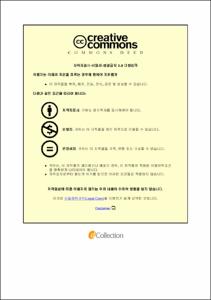2015 개정 교육과정에 따른 중학교 1학년 영어 교과서 쓰기 활동 분석
- Abstract
- This study analyzes the writing activities in eight different English textbooks from the 2015 revised national curriculum to investigate which writing activities are present in each textbook and how they help to improve the writing ability of the target learners, first-grade middle-school students. Furthermore, the characteristics and directions of the current textbooks were compared with eight previous first-grade middle-school English textbooks from the 2009 revised curriculum.
For this purpose, the eight current first-grade middle-school English textbooks of the 2015 revised curriculum are analyzed according to the following criteria: First, the diversity of the writing activities for each genre in the first-grade middle-school English textbooks of the 2015 revised curriculum is examined. Second, the diversity of the writing activity types of the first-grade middle-school English textbooks of the 2015 revised curriculum is examined. Third, the diversity of the achievement criteria of the 2015 revised curriculum reflected in the current English textbooks is examined. Fourth, the differences between the writing activities of the first-grade middle-school English textbooks of the current curriculum and those of the English textbooks from the 2009 revision are examined.
The results of the study are as follows: First, according to the writing activity analysis results based on the writing type of each genre, study writing accounts for 24.4%, the highest proportion. Moreover, writing for social relationships accounts for 22.1%. Furthermore, the proportion of maintaining creative writing is 17.3%, whereas public writing accounts for 4.47%, showing the lowest proportion among those addressed in the writing domain.
Second, according to the writing activity analysis results based on the writing guidance type by stage, guided writing accounted for 70.1%, the highest proportion. On the other hand, controlled writing and free writing account for 18.1% and 11.8%, respectively. Third, according to the writing activity analysis results based on the accomplishment criteria, writing describing surrounding accounts for 23.7%, showing the highest proportion. By contrast, writing activities such as simple invitations, appreciation, congratulations, consolation, and diaries show the lowest proportion at 11.1%.
Fourth, the 2009 revised textbooks and current 2015 revised textbooks all show that the social relationships writing type has the highest frequency. By contrast, social relationships writing frequency shows a 31.6% proportion in the 2009 revised textbooks, whereas the current textbooks show a decreased frequency, with a 22.1% proportion. Furthermore, the public writing type in the 2009 revised textbooks accounts for 5.6%, whereas that of the current textbooks shows a decreased proportion of 4.7%, the lowest proportion among the writing activities by genre. The controlled writing type in the 2009 revised textbooks accounts for 39.4%, but decreased to 18.1% in the current textbooks. By contrast, the proportion of guided writing in the previous 2009 revised textbooks is 53.3%, while that of current textbooks is 70.1%, showing a large frequency increase. Free writing shows some increase from 7.1% in the previous textbooks to 11.8% in the current textbooks, but are still the lowest frequency. In the writing activity analysis results based on the accomplishment criteria, the accomplishment criterion of describing surrounding targets and situations shows 33.8% in the previous 2009 revised textbooks, which accounts for the highest proportion, but it is greatly decreased to 23.7% in the current textbooks.
The implications of the study results are as follows: First, on average, although most textbooks include various practical sentence-level writing activities by genre, some textbooks do not. Second, with respect to writing activities by stage, the focus of learning writing is placed on communicative purpose and their content created in various situations by greatly increasing the frequency of guided writing, instead of focusing on grammar. This is consistent with objectives listed in the current curriculum. Third, in some textbooks, achievement criteria-based activities are excluded, but the writing activities have been constructed by considering the cognitive level of first-grade middle-school students, the target learners.
- Issued Date
- 2019
- Awarded Date
- 2019. 8
- Type
- Dissertation
- Publisher
- 부경대학교
- Affiliation
- 부경대학교 교육대학원
- Department
- 교육대학원 영어교육전공
- Advisor
- 박매란
- Table Of Contents
- I. 서론 1
1.1 연구의 필요성 및 목적 1
1.2 연구 과제 3
1.3 연구의 제한점 3
Ⅱ. 이론적 배경 4
2.1 영어 쓰기의 정의 4
2.2 영어 쓰기의 접근법 5
2.2.1 장르 중심적 접근법 5
2.3 통제 정도에 따른 단계별 영어 쓰기의 접근법 7
2.3.1 통제 작문 8
2.3.2 유도 작문 9
2.3.3 자유 작문 10
2.4 성취 기준에 따른 영어 쓰기의 접근법 11
2.5 선행 연구 12
Ⅲ. 연구 방법 17
3.1 연구 대상 17
3.2 연구 분석영역 18
3.3 연구 분석기준 19
3.3.1 장르 분석 19
3.3.2 작문 유형 26
3.3.3 성취 기준 30
Ⅳ. 분석 결과 및 논의 37
4.1 장르별 쓰기 유형에 따른 쓰기 활동 분석 37
4.2 단계별 쓰기 지도 유형에 따른 활동 분석 39
4.3 성취 기준에 따른 쓰기 활동 분석 41
4.4 2009 개정 영어 교과서와 현행 영어 교과서의 쓰기 활동 비교 43
Ⅴ. 결론 및 제언 53
5.1 결론 53
5.2 제언 55
참고문헌 57
- Degree
- Master
- Files in This Item:
-
-
Download
 2015 개정 교육과정에 따른 중학교 1학년 영어 교과서 쓰기 활동 분석.pdf
기타 데이터 / 2.51 MB / Adobe PDF
2015 개정 교육과정에 따른 중학교 1학년 영어 교과서 쓰기 활동 분석.pdf
기타 데이터 / 2.51 MB / Adobe PDF
-
Items in Repository are protected by copyright, with all rights reserved, unless otherwise indicated.